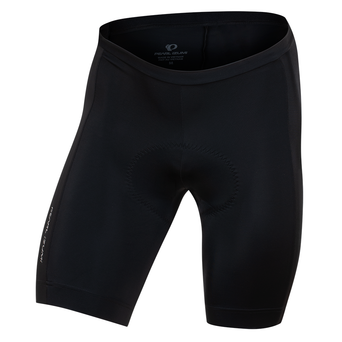19,400 pounds. That’s the amount of paper that will be saved in a single year with our new hangtag program. You know those tags that come on every piece of clothing you buy: the very things you cut off and toss immediately? Well, we’re making some changes to ours.

In addition to 9.7 tons of paper, from 165 trees, the new hangtag program will save 68,082 gallons of water and 4,503 gallons of oil each year.
It’s part of a bigger printing and packaging overhaul that you’ll begin to see with our Spring 2019 line. As part of our new social purpose initiative, we’ve used this example to encourage our team to question the environmental impact of everything they do. And we’re all asking, “How can we do this better?”
Senior graphic designer Dana Heimes lead the design side of this printing and packaging revolution. Taylor Snyder, a materials developer who sources trim and packaging here at PEARL iZUMi, headed up the research, sourcing and accountability aspects.
The goals: Reduce overall packaging and integrate sustainable materials
“We thought we were pretty aware of our packaging until we started this process,” says Heimes. “It’s a constant evolution and a process of learning of how to ask the right questions, to access the best materials and reduce wherever possible.”
How we’re approaching these changes is a reflection of our product design process. We research, we experiment, we evaluate, and we only move forward with the ideas that produce tangible benefits. As author Antoine de St. Exupéry said, “Perfection is achieved not when there is nothing left to add, but when there is nothing more to take away.” Perfection in packaging may be a stretch, but why not set the bar high?
“In order to gauge the reduction in packaging, we measure the waste we produce,” explains Snyder, who spent many late nights over the scale and spreadsheets. “The amount of work that goes into it is insane. We weighed every individual piece of new and old packaging. All of those numbers are punched into the system for documentation and reports. It’s tedious, but it’s really necessary to make informed decisions.”
The humble hangtag became our first target
It turns out the outdoor industry is sort of drunk on hangtags, and we were flirting with up to five per garment. Axing them completely wasn’t an option, so we landed on the goal of one hangtag per garment, in the smallest format possible. Our single hangtag is now the size of a business card, which (fun fact) is the smallest piece of paper that can still be recycled.
The reality is that no matter how many hangtags we used, it would be difficult to match the amount of information you can find on the product pages of our website. And hangtag practices really haven’t evolved to match our new more-connected reality. Care instructions can still be found on the inside of the garment, which is (another fun fact) required by law.
To reach the full potential of the numbers stated above, Snyder sourced new materials. PEARL iZUMi hangtags will now be printed with soy ink and on recyclable paper made from 30 to 75-percent post-consumer recycled paper.

Polybags: The right solutions require the right questions
Every product will still be shipped in its own polybag, but the material has been upgraded.
Early on, we were optimistic about the prospects of biodegradable bags, compostable bags and even the exploration of no bags at all. But we posed questions around how these environmentally appealing technologies hold up in high humidity, vast temperature swings, long-term storage, shipping and the general handling in our warehouses. At the moment, those options don’t provide the durability we need, and in some cases, they still rely on plastics that do not truly biodegrade. If your brand new PEARL iZUMi gear were to arrive at your bike shop or doorstep damaged, that’s the least sustainable result of all.
While we keep an eye on this ever-improving corner of the packaging world, we’re sticking with the excellent protection polybags offer, but moving to a recycled source. We’re upgrading to 100 percent recycled—and recyclable–plastic. We’re also reducing our overall material use by eliminating the larger polybag sizes that, let’s face it, were always a little overkill.
Retailer workbooks get the impact treatment
We’re not just polishing performance on high visibility items, either. In 2018, we stopped printing our retailer workbooks and shifted to an interactive digital catalog. Eliminating paper packs the triple whammy of cutting the environmental impacts of logging, printing, and shipping. The paper savings alone resulting from our shift to digital-only catalogs prevent 82 trees from being cut, saves 40,000 gallons of water, and eliminates the need for 2,222 gallons of oil each year.
Doing more is a process in progress
We know we have a lot to learn, and we’re genuinely excited about that fact. The next packaging dilemma to tackle is how we can minimize our shipping impact. We can’t wait!
We approach this process with the same deliberate care we take with the design and creation of our gear. In other words: a lot. Every detail matters and the only changes worth making are those that make a tangible difference.




